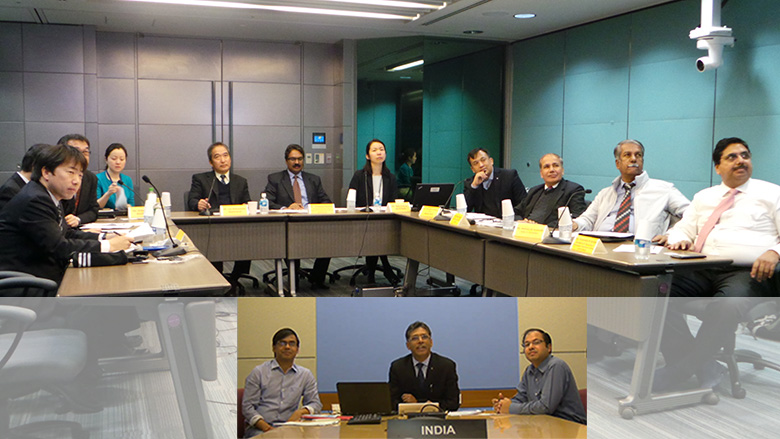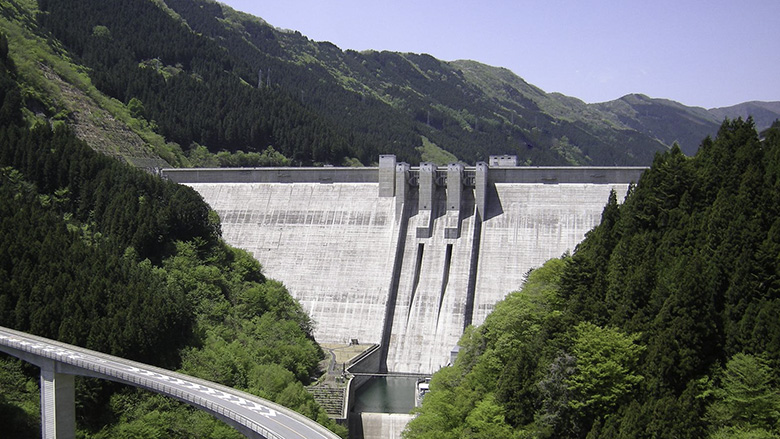The World Bank Disaster Risk Management Hub, Tokyo, working with the Ministry of Land, Infrastructure, Transport and Tourism (MLIT), Japan and the Japan Water Agency (JWA), organized a roundtable on “Dam Safety and Management related to Seismic Hazards” with Japan and Indian water management experts. The session was held as part of “Improving Service Delivery of DRM in India” project through “Japan-World Bank Program for Mainstreaming Disaster Risk Management in Developing Countries” (Japan Program).
The session connected key experts in Tokyo and Delhi, including a director from MLIT, experts from JWA, as well as Indian delegates from Central Water Commission (CWC), Power Department of Uttarakhand State, Uttarakhand Jal Vidyut Nigam Limited (UJVNL), and the Water Resource Department of the State of Karnataka.
With the help of participating World Bank project teams and disaster risk management specialists, the session:
- Provided an overview of the four exposure visits by Indian delegation to dams in Japan managed by JWA and Japanese experts’ recent engagement with India;
- Brought out key lessons and expertise obtained from the visits and their applications in India; and
- Demonstrated the needs of Indian delegations on dam safety management with a focus on seismic hazards and potential collaboration.
Dr. Ravi Kumar Pillai, Project Director from Central Water Commission (CWC), gave an overview of the Dam Rehabilitation and Improvement Project (DRIP), which aimed to improve the safety and operational performance of 250 dams in seven Indian states under the technical assistance of the World Bank. He explained that the dam engineers of the DRIP implementing agencies had participated in four exposure visits to Japan arranged by JWA in support of the Japan Program. He highlighted that these visits were highly beneficial for designing and implementing DRIP activities, and emphasized the value of further collaboration with Japanese experts especially on early warning system, seismic event response system, and sediment management.
Mr. Nobuyuki Ichihara, Deputy Director, International Affairs Division, JWA provided an overview of JWA’s dam management expertise including information and communications technology (ICT)-enabled operation and maintenance (O&M) system, earthquake monitoring, and early warning system. He emphasized that JWA was continuously advancing dam safety management system through:
- Long-term data collection, accumulation, and analysis;
- Human resource development with hands-on dam operational experience; and
- Advanced technology for integrated water resource management.
He provided an overview of expert exchange conducted between CWC and JWA including inspection of Idukki Dam and Neyyer Dam in India by JWA experts in November 2015.
Mr. Ichihara briefly introduced an inspection manual for dam field engineers after seismic events that JWA was developing for India in support of the Japan Program. Dr. Kido, Director of International Affairs Division, JWA highlighted that the manual would be used as prototype for further customization to 250 dams in India. He also commented that JWA was also positive to help the CWC’s Emergency Action Plan (EAP) development in order to improve the safety of river basin communities in India. Dr. Ravi from CWC expressed that CWC would develop and customize an effective standard operating procedure (SOP) for 250 dams in India based on the manual.
Dr. Panwar, Special Secretary, Power Department, the State of Uttarakhand, explained that dam safety, and operation and maintenance (O&M) had been traditionally a lower priority when budgeting the state resources once constructed. He stated that this exposure visit sensitized him to the need for allocating more resources for dam safety management as well as intensive capacity building and training of technical and administrative staff.
Mr Ichihara concluded that the construction of JWA’s Makio Dam had been financially supported by the World Bank in 1950s, and was pleased to share JWA’s expertise and experience accumulated since then with India. Dr. Okazumi, Director, International Cooperation and Engineering for Infrastructure, MLIT pointed that aging infrastructure is also a critical challenge in Japan, and looked forward to continuously exchanging knowledge and experience with India for the development of more efficient O&M methodologies and techniques.
In his closing remarks, Jun Matsumoto, Senior Water Resources Management Specialist, World Bank Group concluded that he hopes the relationship between JWA and CWC established through a series of exposure visits under the Japan Program will continue in a sustainable matter.


